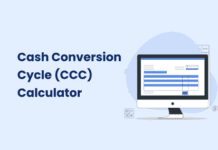Payment fraud is a threatening issue for any type or size of business as it is one of the major causes of financial loss. This includes check fraud, electronic fraud, and ACH fraud. Therefore, businesses need to put a robust prevention system in place to prevent fraud at all costs, such as Positive Pay.
In this article, we will define Positive Pay, explain how it works, its types, and its significance in preventing payment fraud. We will also address how to implement Positive Pay, common challenges that businesses may encounter, and offer some key takeaways.
What is Positive Pay?
Positive Pay is a fraud prevention service provided by banks to their business customers. The service helps businesses protect against payment fraud by verifying the legitimacy of checks or electronic payments before they are processed. With Positive Pay, businesses can identify potentially fraudulent transactions and prevent them from being paid out.
How Positive Pay Works?
Positive Pay works by comparing a list of issued checks or authorized electronic payments against checks presented for payment or electronic payment requests received. When a payment is presented, the bank checks it against the authorized list.
If it matches, approval and processing are automatic. If not, the bank flags it as potentially fraudulent and notifies the business to review and approve or reject it accordingly.
Types of Positive Pay
There are two primary forms of Positive Pay:
-
- Traditional Positive Pay: With traditional Positive Pay, businesses provide their banks with a list of issued checks or authorized electronic payments. The bank then compares each payment request against this list and notifies the business of any discrepancies.
- Reverse Positive Pay: With reverse Positive Pay, the bank provides the business with a list of payment requests received. The business then reviews and approves or rejects these requests. Reverse Positive Pay is ideal for businesses that handle high transaction volumes.
Examples of Positive Pay
Let’s say your business issues a check to pay vendors and you’ll need to prepare a list of authorized checks for the bank. Whenever a payment is done, the bank will compare it to the list before to see if the data match, also known as reconciliation.
If it matches, the bank will process the payment as usual. Using Positive Pay, the bank will detect any mismatch in the transaction and flag it as potential fraud. You will then receive a notification to review, approve, or reject the transaction.
The same case usually happens to electronic payments. When you send your bank a record of all the electronic payments that have been made, they will reconcile them with any incoming payments.
The bank will only authorize if the amount matches. If not, the Positive Pay system will alert you so that you can verify the transaction before any fraudulent activities take place.
Importance of Positive Pay in Preventing Payment Fraud
Positive Pay is an indispensable tool in combatting payment fraudulence for several reasons:
-
- Fraud Prevention: Positive Pay helps businesses guard against payment fraudulence by verifying the legitimacy of checks, ACH, or electronic payments.
- Financial Protection: Positive Pay offers businesses financial security by blocking fraudulent pay, shielding them from monetary losses.
- Risk Management: Positive Pay helps businesses manage payment risks by detecting potentially fraudulent transactions before they are processed.
How to Implement Positive Pay
Implementing Positive Pay requires the following steps:
- Contact your bank: Ask if your bank provides Positive Pay, its benefits, and any requirements to integrate Positive Pay into your business process.
- Prepare a list of authorized payments: Create a list of all the authorized payments from checks to electronic. Make sure that it has all the details, preferably including audit trails, so that your bank can verify each transaction easily.
- Review and approve payments: Once your business receives a payment request, the bank will inform you. It is your responsibility to verify the request and whether you should approve or reject it. If the payment is flagged as fraud, the bank will cancel it from getting processed.
- Monitor your account regularly: If you detect any suspicious activities, always let the bank know so they can take an action promptly.
Common Challenges in Implementing Positive Pay
Implementing Positive Pay can present its own challenges, such as:
-
- Cost: Positive Pay can vary in costs depending on the bank and type of service selected. Just make sure the one you’ll select comes with features that can compromise its pricing.
- Technical Requirements: Adopting Positive Pay may necessitate technical resources and expertise that your business may not possess. Evaluate if your business has the bandwidth before making a decision.
- Administrative Burden: Positive Pay can present administrative challenges, especially for businesses with a high volume of transactions, as it will require more financial reporting.
- False Positives: Positive Pay can sometimes mistakenly flag legitimate payments as potentially fraudulent, leading to delays in payment system processing.
- Employee Training: Employees responsible for reviewing and authorizing payments should receive adequate instruction to ensure they comprehend the Positive Pay process, as well as to be able to detect potentially fraudulent activity. However, most employees don’t have the time to take part in such intensive training.
Protect Your Most Treasured Business Assets with a Secure Payment Software
Positive Pay is an effective fraud prevention solution that businesses can use to safeguard themselves against payment fraud. By verifying the legitimacy of checks or electronic payments before they’re processed, Positive Pay helps avoid financial losses and minimizes payment risk.
Implementing Positive Pay involves working with your bank to create a list of authorized payments, reviewing and approving payment requests, and monitoring account activity for potentially fraudulent activity.
While there may be challenges involved when implementing Positive Pay, its advantages outweigh any costs. Businesses taking payment security seriously should consider including Positive Pay as part of their overall risk management strategy.
Eliminate fraud by leveraging software such as Peakflo that follows the best industry practices. In Peakflo, all of your financial data is encrypted under the 265-bit Advanced Encryption Standard and stored in a Google Cloud database that adheres to GDPR and CCPA.
Peakflo also keeps an audit trail that captures all changes made to your accounts payable and receivable transactions, making your auditing process easier.
Try out Peakflo for free, no CC required!









![Why AI Sales Calls Are Making Good Sales Reps Even Better [2025 Guide] ai sales calls](https://cdn-kmjmp.nitrocdn.com/YvtqmrsiHUxqerlSiZgbfzqqTARWTElr/assets/images/optimized/rev-834053b/blog.peakflo.co/wp-content/uploads/2025/09/65168cf6-3001-4733-8cbc-12d5684cf449-218x150.webp)

































